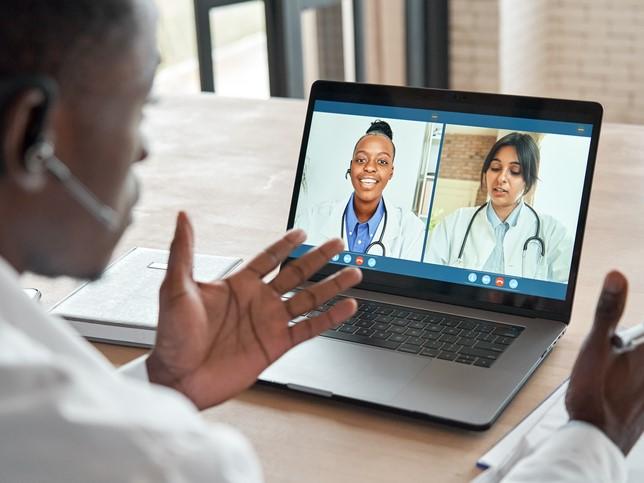Our health professions must grow at a rapid pace to meet future healthcare needs. One of the biggest barriers to this lies in clinical placement capacity. How do we ensure that students get sufficient quality clinical experiences to prepare for practice and meet registration requirements in their respective programmes and countries?
One meaningful and sustainable (albeit small) innovation strategy that can be used to enhance quality clinical placement capacity in the healthcare workforce is project-based learning (PjBL). By incorporating PjBL, organisations that host health-professional students can overcome time and space constraints as well as challenges around staff flexibility to take on students year-round or transform part-time placements into full-time opportunities.
What is project-based learning?
PjBL is an approach to learning whereby students engage in real-world projects that are designed to address authentic problems. In the context of health professions education, this means that students learn through meaningful collaboration and direct experiences in complex settings. Clinical placements provide an ideal environment for PjBL, given that they are highly complex settings with diverse stakeholders and the fact that students are usually immersed in the setting over a sustained period, typically a number of weeks.
- Phenomenon-based learning: what, why and how
- Unifying theoretical and clinical education in a medical curriculum
- How professional supervision can benefit academics
When PjBL is integrated into clinical placements, students can acquire skills that reach beyond direct clinical services. Projects help students better understand their host organisation’s role in the larger healthcare landscape and appreciate different stakeholders’ perspectives, including patients, staff and other healthcare professionals. Students can also develop and demonstrate skills in project management, communication and problem-solving, which contribute to the diverse skillsets that they, as contemporary healthcare professionals and future leaders, will need in the field.
What types of projects can be used?
There is a wide range of project possibilities, the choice of which depends on the organisation’s needs, student interests and available time and resources. Popular projects include resource development where students collaborate with others to create resources for staff, patients or the organisation. Examples include development of patient education resources, web pages for patients or staff, staff-training initiatives or clinical and research repositories. Innovation projects may allow students to evaluate existing services or create new ones through collaboration with patients, staff or other parties. Students may complete service cost-benefit analyses or business and marketing plans. While students will typically complete an entire project during their placement, larger or long-term projects may be staged over multiple placements within a single organisation, with each student having an explicit role.
Tips for integrating project-based learning into clinical placements
Here are four key aspects to consider when using PjBL within clinical placements for the benefit of students and host organisations. All may be considered over single or multiple placements.
- Identify a compelling question or problem during the placement. Any project must be driven by a key question or problem that matters to both the host organisation and, as they are in the driver’s seat, the student. Host organisations are encouraged, where needed, to discuss with their student what is meaningful for them and provide guidance or options. Students should be offered time to familiarise themselves with the organisation and to brainstorm ideas through staff interactions or informal discussions with patients.
- Establish clear expectations. Successful projects rely on careful planning and agreed-upon expectations. Sharing clear expectations between the student and host organisation of the number of hours the student will dedicate to the project, where the work will occur, and which individuals they will consult for input and feedback are crucial. While the project might evolve flexibly, both the host organisation and the student need a clear understanding of the expected final product and what project success entails.
- Build in authentic engagement with others. What sets PjBL apart from other learning activities is sustained and authentic collaboration between students and stakeholders to obtain input and perspectives throughout the project’s evolution – from initial input to final feedback and tweaks to the end product. Collaboration may involve patients, staff, other health professionals and other relevant parties such as operations and, for projects involving online resource development, IT services.
- Deliver a tangible solution or outcome. The project’s goal is to produce a tangible solution or artefact that aligns with the driving question and resonates with everyone involved, including the host organisation. A tangible outcome also holds value for the student, who may use the project to articulate the value they have provided to a healthcare organisation. This might allow the project to contribute to portfolio work or résumé development, potentially enhancing employability.
How to embed assessment in project-based learning
Assessment must be considered when planning PjBL during clinical placements, especially where projects make up a significant part of the student’s placement. Several assessment tools can be used for projects; however, many health professional programmes require clinical placement performance to be assessed according to standardised measures. Host organisations are encouraged to think about how the diverse skills exhibited during a project, such as problem-solving, communication, education skills and evidence-based practice can contribute to the student’s assessment.
PjBL has advantages for both students and host organisations, and it has the potential to enhance placement capacity on a small scale by providing flexibility and additional value to organisations. With appropriate guidance, the implementation of PjBL during placements can be sustained by host organisations, providing valuable experiences and a more diverse learning environment for students.
Roma Forbes is a senior lecturer in physiotherapy and Michael Donovan is a clinical education liaison manager and lecturer, both in the School of Health and Rehabilitation Sciences in the Faculty of Health and Behavioural Sciences at the University of Queensland.
If you would like advice and insight from academics and university staff delivered direct to your inbox each week, sign up for the Campus newsletter.




comment